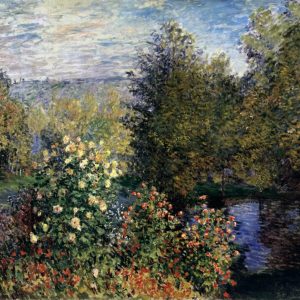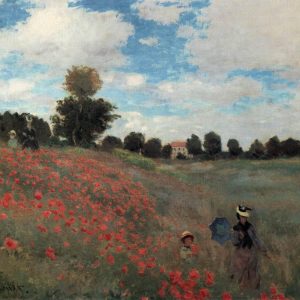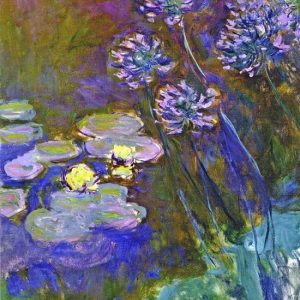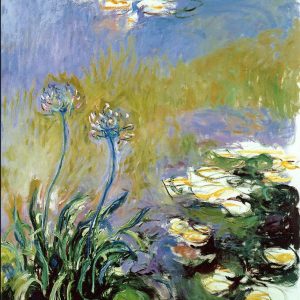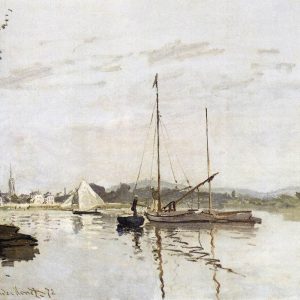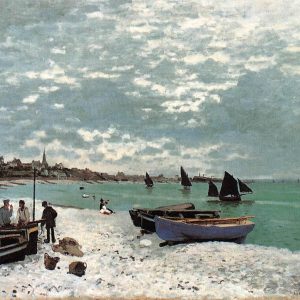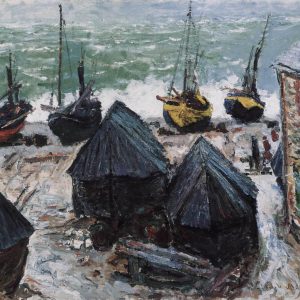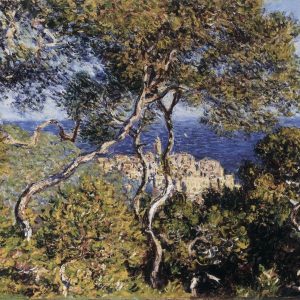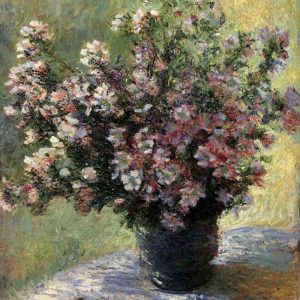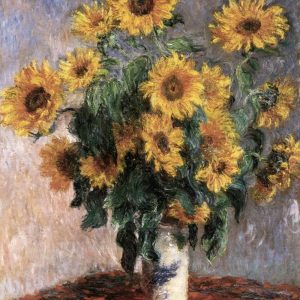Claude Monet
Showing 1–12 of 196 results
Title: Claude Monet: The Father of Impressionism
Claude Monet, the renowned French painter, is widely regarded as the pioneer of the Impressionist movement. Born on November 14, 1840, in Paris, France, Monet’s artistic journey spans over six decades, leaving an indelible mark on the world of art. His innovative approach to painting, characterized by his fascination with light, color, and the ephemeral qualities of nature, revolutionized the art world and paved the way for modern art.
Monet’s early life was marked by a love for the outdoors and a keen interest in drawing. Despite his father’s wish for him to join the family’s ship-chandling business, Monet’s mother, Louise-Justine Aubrée Monet, supported his artistic aspirations. In 1851, at the age of 11, Monet entered the Le Havre secondary school of the arts, where he honed his skills in drawing and caricature.
It was during this time that Monet met Eugène Boudin, a mentor who introduced him to the concept of plein air painting. Boudin encouraged Monet to paint outdoors, capturing the fleeting effects of light and atmosphere on the landscape. This early influence would shape Monet’s artistic vision throughout his career, as he sought to depict the ever-changing beauty of nature.
In 1862, Monet moved to Paris to study at the Académie Suisse, where he met fellow artists Pierre-Auguste Renoir and Frédéric Bazille. Together, they explored new ways of representing the world around them, challenging the rigid conventions of academic painting. Monet’s early works, such as “Camille” (1866) and “Women in the Garden” (1866-1867), showcased his developing style, characterized by loose brushwork, vibrant colors, and a focus on the interplay of light and shadow.
The 1870s marked a pivotal period in Monet’s career. In 1874, he participated in the first Impressionist exhibition, showcasing his now-famous painting “Impression, Sunrise” (1872). This work, which depicts the port of Le Havre in a hazy, atmospheric light, inadvertently gave the Impressionist movement its name when art critic Louis Leroy disparagingly referred to the painting as an “impression.” Despite initial ridicule from critics, Monet and his fellow Impressionists persevered, holding a total of eight exhibitions between 1874 and 1886.
During this period, Monet’s art evolved as he sought to capture the transient effects of light and color in his paintings. He often worked in series, painting the same subject at different times of day and under various weather conditions. The “Haystacks” series (1890-1891), “Poplars” series (1891), and the iconic “Rouen Cathedral” series (1892-1894) exemplify Monet’s dedication to this approach, as he meticulously documented the shifting light and atmosphere on these subjects.
In 1883, Monet discovered the small village of Giverny in Normandy, which would become his home and the subject of many of his most famous paintings. He created a magnificent garden at Giverny, complete with a Japanese-style bridge and a pond filled with water lilies. This garden served as a living laboratory for Monet’s artistic experimentation, as he tirelessly explored the interplay of light, color, and reflection on the water’s surface.
The water lily paintings, created during the last three decades of Monet’s life, are considered the culmination of his artistic vision. These monumental works, some of which measure over six feet in length, immerse the viewer in a world of shimmering color and light. Monet’s bold brushwork and innovative composition challenged traditional notions of perspective and depth, paving the way for the development of abstract art in the 20th century.
Despite facing personal tragedies, including the death of his first wife, Camille, in 1879, and his own declining health in later years, Monet remained dedicated to his art until the end of his life. He continued to paint, even as his vision deteriorated due to cataracts, adapting his technique to his changing perception of the world.
Claude Monet’s legacy extends far beyond his own lifetime. His unwavering commitment to capturing the ephemeral beauty of the natural world inspired generations of artists and forever changed the course of art history. Today, his works can be found in prestigious museums and collections around the globe, testament to the enduring power and appeal of his artistic vision.
In conclusion, Claude Monet’s life and art serve as a testament to the transformative power of creativity and the human spirit. His innovative approach to painting, characterized by a fascination with light, color, and the ever-changing beauty of nature, laid the foundation for the Impressionist movement and paved the way for the development of modern art. Through his tireless dedication to his craft and his unwavering commitment to his artistic vision, Monet left an indelible mark on the world of art, inspiring countless artists and art lovers for generations to come. As we continue to celebrate his legacy, we are reminded of the enduring power of art to transform our perception of the world and to illuminate the beauty and wonder that surrounds us.


